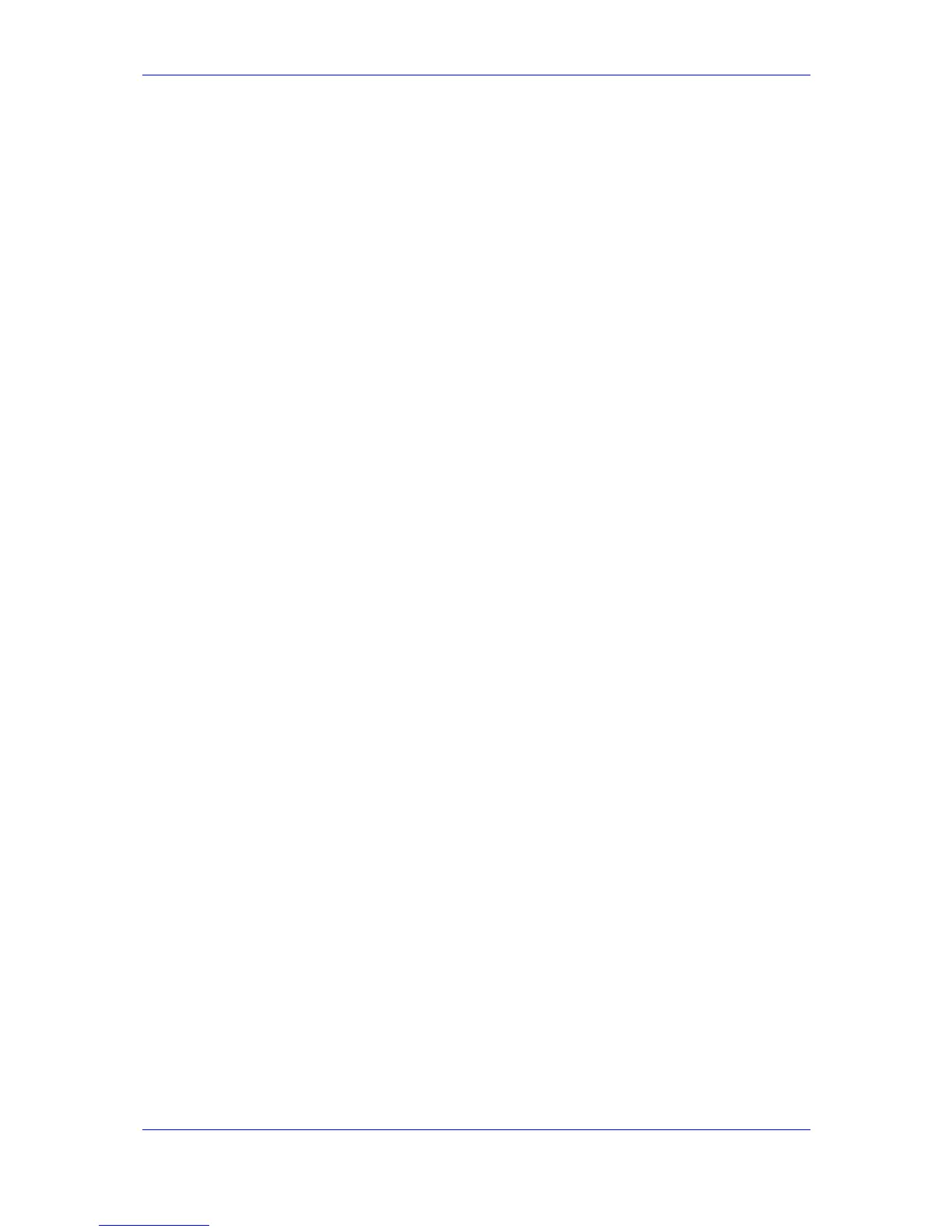Version 6.2 315 February 2011
SIP User's Manual 9. VoIP Networking Capabilities
9.6 Simple Network Time Protocol Support
The Simple Network Time Protocol (SNTP) client functionality generates requests and
reacts to the resulting responses using the NTP version 3 protocol definitions (according to
RFC 1305). Through these requests and responses, the NTP client synchronizes the
system time to a time source within the network, thereby eliminating any potential issues
should the local system clock 'drift' during operation. By synchronizing time to a network
time source, traffic handling, maintenance, and debugging become simplified for the
network administrator.
The NTP client follows a simple process in managing system time: the NTP client requests
an NTP update, receives an NTP response, and then updates the local system clock based
on a configured NTP server within the network.
The client requests a time update from a specified NTP server at a specified update
interval. In most situations, this update interval is every 24 hours based on when the
system was restarted. The NTP server identity (as an IP address) and the update interval
are user-defined (using the ini file parameters NTPServerIP and NTPUpdateInterval
respectively), or an SNMP MIB object (refer to the Product Reference Manual).
When the client receives a response to its request from the identified NTP server, it must
be interpreted based on time zone or location offset that the system is to a standard point
of reference called the Universal Time Coordinate (UTC). The time offset that the NTP
client uses is configurable using the ini file parameter NTPServerUTCOffset, or via an
SNMP MIB object (refer to the Product Reference Manual).
If required, the clock update is performed by the client as the final step of the update
process. The update is performed in such a way as to be transparent to the end users. For
instance, the response of the server may indicate that the clock is running too fast on the
client. The client slowly robs bits from the clock counter to update the clock to the correct
time. If the clock is running too slow, then in an effort to catch the clock up, bits are added
to the counter, causing the clock to update quicker and catch up to the correct time. The
advantage of this method is that it does not introduce any disparity in the system time that
is noticeable to an end user or that could corrupt call timeouts and timestamps.

